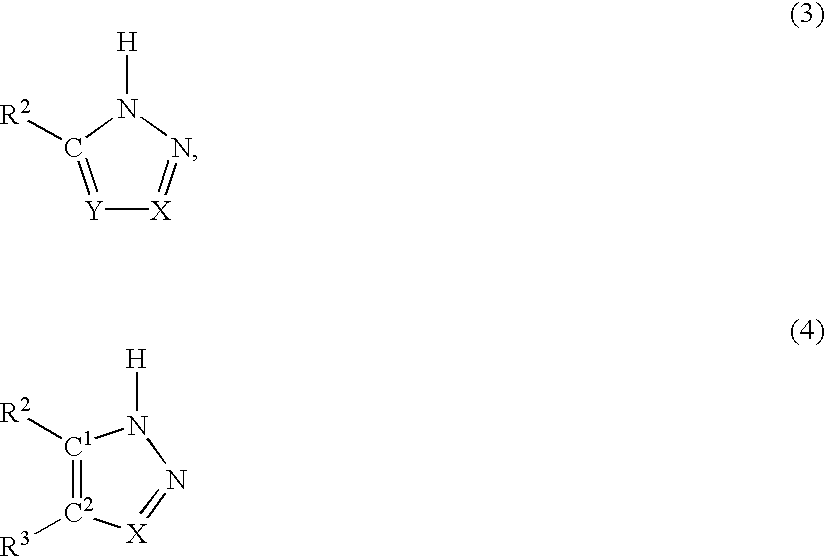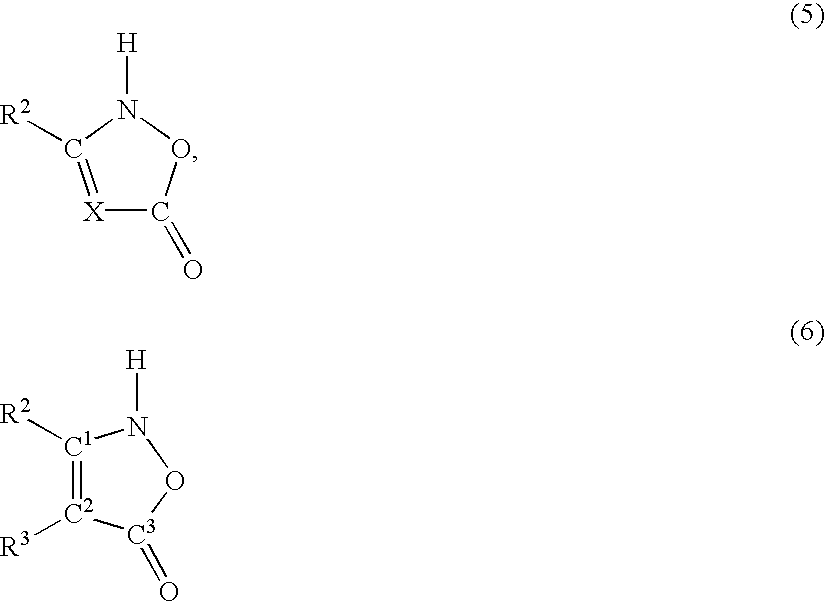Process for preparing non-proteinogenic L-amino acids
a technology of l-amino acids and process, which is applied in the field of process for preparing non-proteinogenic lamino acids, can solve the problems of affecting the metabolism of microorganisms, affecting the stability of the reaction reaction, and affecting the reaction reaction reaction rate, so as to avoid the isolation of unstable compounds and be particularly economical
- Summary
- Abstract
- Description
- Claims
- Application Information
AI Technical Summary
Benefits of technology
Problems solved by technology
Method used
Image
Examples
example 2
Purifying the CysK and CysM Proteins
[0092] Using the cysM-StrepTag construct (pFL145), it was possible to obtain very good gene expression in the E. coli strain DH5.alpha. (Clonetech, Heidelberg, Germany). Propagation and expression were carried out in accordance with the instructions provided by the Institut fur Bioanalytik company, Gottingen, Germany. The strain DH5.alpha. / pFL145 was deposited in the Deutsche Sammlung fur Mikroorganismen und Zellkulturen [German collection of microorganisms and cell cultures], DSMZ, in accordance with the Budapest Treaty, under number DSMZ 14088. By contrast, expression was only very weak in the case of the cysK-Streptag construct (pLE1). However, in this case (pLE4), good formation of the gene product was achieved by recloning the gene fusion, as an XbaI / HindIII fragment, into a vector containing the T7 promoter (pRSET5a) (Stratagene, Heidelberg, Germany) and expressing it in the strain BLR21(DE3) (Novagen, Darmstadt, Germany). The strain BLR21 (...
example 4
Investigating the Catalytic Possibilities of the O-acetyl-L-serine Sulfhydrylases CysK and CysM
[0099] In order to use the O-acetyl-L-serine sulfhydrylases to prepare non-proteinogenic amino acids, other nucleophilic compounds were used in the reaction in place of sulfide or thiosulfate. In order to detect them, a precolumn derivatization for amino acids was carried out using ortho-phthaldialdehyde. Using this method, it was possible to carry out a broad screening for suitable nucleophilic substrates.
[0100] The mixtures contained 4 mM O-acetyl-L-serine (added from a 200 mM stock solution in 500 mM Nasuccinate buffer, pH 5.5), 20 mM nucleophilic compound, 100 mM K phosphate buffer, pH 7.0, and 5 .mu.g of purified enzyme / ml. The reaction was stopped with {fraction (1 / 100)}th the volume of acetic acid (96% v / v) and analyzed by HPLC using a HP aminoquant column (200 mm.times.2.1 mm) in accordance with the manufacturer's instructions supplied by Hewlett Packard, Waldbronn, Germany.
[0101] ...
example 5
Preparing the O-acetyl-L-serine Sulfhydrylase CysM by Fermentation
[0104] As a preliminary culture for the fermentation, 20 ml of LB medium (10 g of tryptone / l, 5 g of yeast extract / l, 10 g of NaCl / l), which additionally contained 100 mg of ampicillin / l, were inoculated with the strain DH5.alpha. / pFL145 (see above) and incubated overnight, in a shaker, at 30.degree. C. and 150 rpm. Subsequently, the entire mixture was transferred into 100 ml of SM1 medium (12 g of K.sub.2HPO.sub.4 / l; 3 g of KH.sub.2PO.sub.4 / l; 5 g of (NH.sub.4).sub.2SO.sub.4 / l; 0.3 g of MgSO.sub.4.times.7 H.sub.2O / l; 0.015 g of CaCl.sub.2 .times.2 H.sub.2O / l; 0.002 g of FeSO.sub.4.times.7 H.sub.2O / l; 1 g of Na.sub.3citrate.times.2 H.sub.2O / l; 0.1 g of NaCl / l; 1 ml of trace element solution / l, with this solution consisting of 0.15 g of Na.sub.2MoO.sub.4.times.2 H.sub.2O / l; 2.5 g of Na.sub.3B.sub.0.3 / l; 0.7 g of CoCl.sub.2.times.6 H.sub.2O / l; 0.25 g of CuSO.sub.4.times.5 H.sub.2O / l; 1.6 g of MnCl.sub.2.times.4 H.sub.2O...
PUM
| Property | Measurement | Unit |
|---|---|---|
| Angle | aaaaa | aaaaa |
| Acidity | aaaaa | aaaaa |
| Acidity | aaaaa | aaaaa |
Abstract
Description
Claims
Application Information
 Login to View More
Login to View More - R&D
- Intellectual Property
- Life Sciences
- Materials
- Tech Scout
- Unparalleled Data Quality
- Higher Quality Content
- 60% Fewer Hallucinations
Browse by: Latest US Patents, China's latest patents, Technical Efficacy Thesaurus, Application Domain, Technology Topic, Popular Technical Reports.
© 2025 PatSnap. All rights reserved.Legal|Privacy policy|Modern Slavery Act Transparency Statement|Sitemap|About US| Contact US: help@patsnap.com



